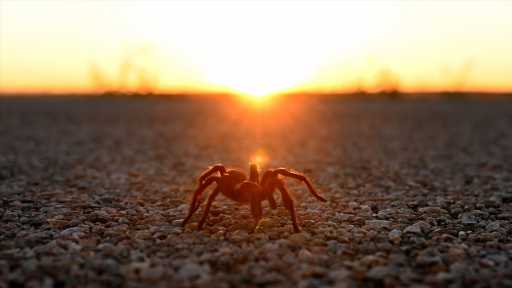
The annual movement of local tarantulas is well underway in Southern Colorado.
La Junta will hold its first-ever Tarantula Festival Friday and Saturday, Oct. 7-8. Activities will include guided educational tours to the Comanche National Grassland to view tarantulas in their natural habitat. The tarantulas are best viewed at dusk between 6-7 p.m. and into the night.
Male tarantulas are on the hunt for females, in what researchers suggest is a ‘mate-gration” rather than a migration. Spiders that are seen on the move are the males, while females will stay tucked safely in their burrows. When the males are lucky enough to find a female’s burrow, they drum their legs at the entrance and wait for the female to come out to breed. Tarantulas start making their appearances in southeastern Colorado around the end of August, roaming throughout the month of September and into early October when the weather starts to get cold. The males become sexually active by the age of 8 and die once they’ve mated, not lasting through the following winter. Males can live up to 10 years while females can live as long as 30-40 years.
The journey for these large, fuzzy arachnids can be anywhere from hundreds of feet to several miles in any direction, but hundreds of spiders are killed by cars as they attempt to cross roads. One Prowers County deputy sheriff said he has clocked cars going in excess of 100 mph on these country roads. Slowing down on roadways in Southern Colorado in the fall can better allow for males to safely cross the road.
For those hoping to catch a glimpse of the spiders, researchers caution that it is important not to interfere with them in their natural habitat or with their behavior in any way.
The Butterfly Pavilion has been working to protect the species, trying to better understand them and educate people about the spiders. One common misconception is that tarantulas are aggressive.
“The last thing they want to do is waste their venom,” said Colorado State University PhD candidate Jackie Billotte. “They don’t want to bite if they don’t need to.”
Rich Reading, Butterfly Pavilion Vice President of Science and Conservation, said several species of tarantulas are threatened due to habitat destruction, as well as exploitation for the pet trade.
“They are a critical part of the equilibrium of the prairie and grasslands,” Reading said. “They are an important apex predator in the invertebrate population as well as being an important part of the food chain.”
Subscribe to our weekly newsletter, The Adventurist, to get outdoors news sent straight to your inbox.
Source: Read Full Article






















